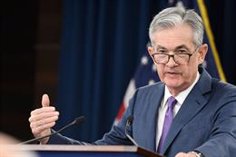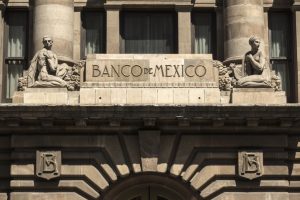778110.1.260.149.20230614201310

June 14 () –
The Federal Open Market Committee (FOMC) of the United States Federal Reserve (Fed) has unanimously decided to keep interest rates in the target range of between 5% and 5.25% after the ten increases undertaken since March 2022, as reported this Wednesday.
As already hinted at in the May hike, the Fed has opted to freeze rates at their current level to “gather additional information” on the implications of monetary policy. However, the institution has made it clear that it remains committed to bringing inflation to the 2% target in the long term.
In this way, when determining future Fed policies, the consequences of the progressive tightening of monetary policy will be taken into account, such as the “lagged effects” of monetary policy on economic activity, inflation and the financial sector. In addition, the Fed ensures that “it is prepared” to “adjust” its monetary policy if “risks emerge that prevent the achievement of the Committee’s objectives.”
On the other hand, the Fed’s balance sheet reduction plans remain unchanged, reinvesting the principal of the debt that matures, with the exception of 95,000 million dollars (87,891 million euros) each month, between Treasury bonds and mortgage securities .
ECONOMIC FORECASTS
Likewise, the Fed has also published the update of its macroeconomic forecasts, as well as the estimates of its members on the evolution of interest rates.
The ‘dot-plot’, or diagram of points, has been modified in a bulky way with respect to March. In the third month of 2023, most FOMC members expected rates at the end of 2023 to be between 5% and 5.5%. Now, however, a vast majority expects them to at least close the year in the range of 5.5% and 6%. Looking ahead to 2024, there is a clear dispersion among those who expect the price of money to be between 4% and 5%, although there are some members who bet on figures higher than 5%.
The central projection of the issuing institute indicates that interest rates will be between 5.4% and 5.6% in 2023, similar to the 5.1% and 5.4% projected in March. For 2024, the forecast is for the range to be between 4.4% and 5.1%, compared to the previous forecast of between 3.9% and 5.1%.
Regarding macroeconomic developments, the Fed has improved its outlook. Thus, it has revised upwards, to 1%, the country’s GDP growth in 2023, compared to the 0.4% estimated in March. However, the growth forecast for 2024 has fallen by one tenth, to 1.1%, while that of 2025 has also fallen by one tenth, to 1.8%.

Regarding unemployment, the Fed estimates that the country will close the year with an unemployment rate of 4.1%, four tenths less than the estimate three months ago. In both 2024 and 2025, unemployment will stand at 4.5%, one tenth less in both cases compared to previous forecasts.
GDP, UNEMPLOYMENT AND INFLATION
The economy of the world’s leading power experienced annualized growth of 1.3% of its GDP in the first quarter of 2023 compared to 2.6% in the last stretch of 2022, according to the Office of Economic Analysis (BEA, for its acronym in English).
As for the US labor market, it created 339,000 non-agricultural jobs during the month of May, and, in addition, unemployment fell three tenths to 3.7%, according to the Labor Department’s Bureau of Labor Statistics.
Thus, the unemployment rate in the US moved away from the minimum registered in January and April, when it reached 3.4%, which was its lowest rate since 1969.
For its part, the personal consumption expenditure price index, the variable preferred by the Fed to monitor inflation, stood at 4.4% year-on-year in April, two tenths above the previous month. The monthly rate registered an expansion of 0.4%, three tenths more.
The underlying variable, which excludes energy and food prices from its calculation due to their greater volatility, closed at 4.7%, one tenth more.






![[Img #74661]](https://thelatestnews.world/wp-content/uploads/2024/12/The-power-of-ultrasound-150x150.jpg)






